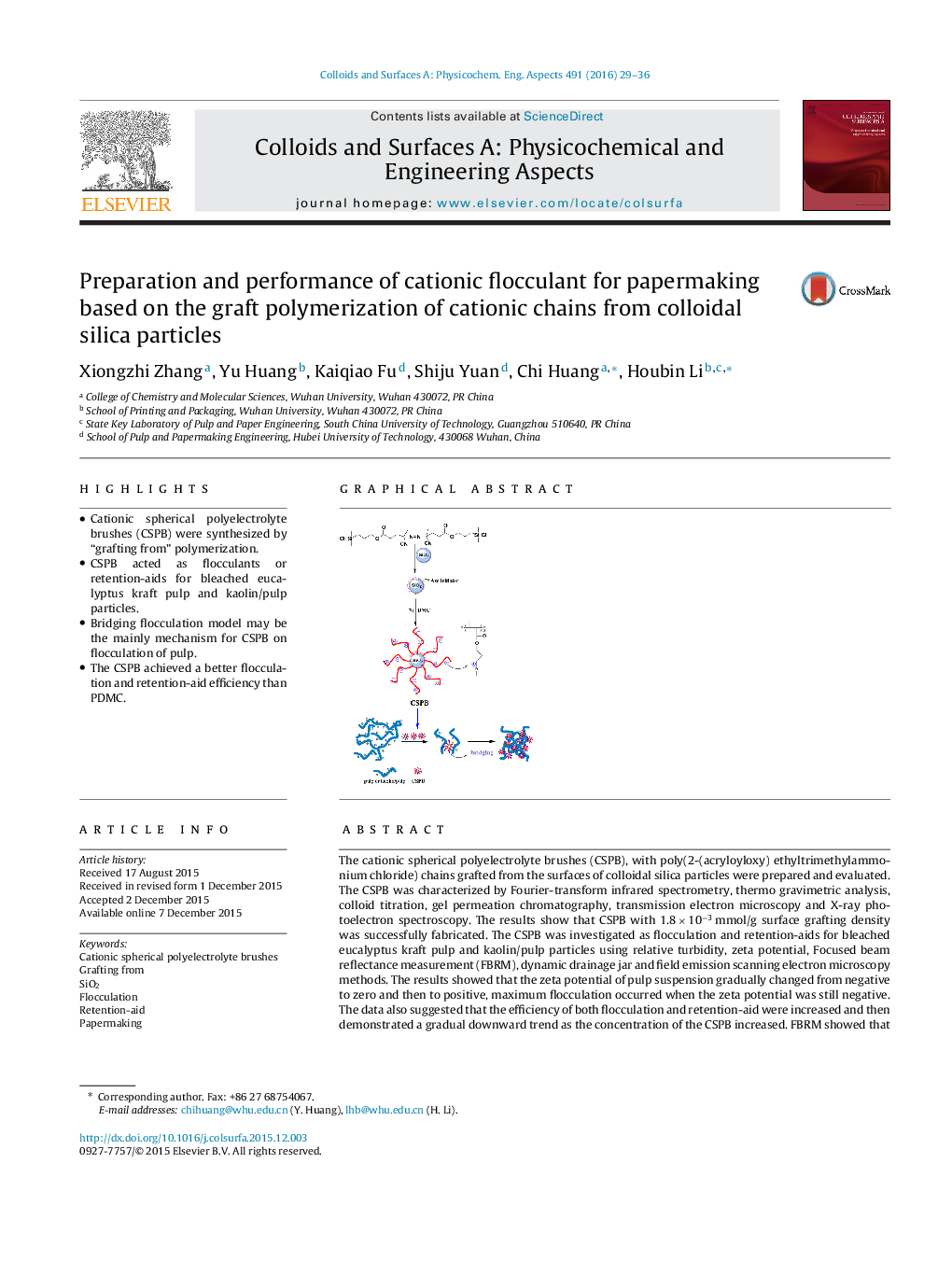| کد مقاله | کد نشریه | سال انتشار | مقاله انگلیسی | نسخه تمام متن |
|---|---|---|---|---|
| 591793 | 1453882 | 2016 | 8 صفحه PDF | دانلود رایگان |
• Cationic spherical polyelectrolyte brushes (CSPB) were synthesized by “grafting from” polymerization.
• CSPB acted as flocculants or retention-aids for bleached eucalyptus kraft pulp and kaolin/pulp particles.
• Bridging flocculation model may be the mainly mechanism for CSPB on flocculation of pulp.
• The CSPB achieved a better flocculation and retention-aid efficiency than PDMC.
The cationic spherical polyelectrolyte brushes (CSPB), with poly(2-(acryloyloxy) ethyltrimethylammonium chloride) chains grafted from the surfaces of colloidal silica particles were prepared and evaluated. The CSPB was characterized by Fourier-transform infrared spectrometry, thermo gravimetric analysis, colloid titration, gel permeation chromatography, transmission electron microscopy and X-ray photoelectron spectroscopy. The results show that CSPB with 1.8 × 10−3 mmol/g surface grafting density was successfully fabricated. The CSPB was investigated as flocculation and retention-aids for bleached eucalyptus kraft pulp and kaolin/pulp particles using relative turbidity, zeta potential, Focused beam reflectance measurement (FBRM), dynamic drainage jar and field emission scanning electron microscopy methods. The results showed that the zeta potential of pulp suspension gradually changed from negative to zero and then to positive, maximum flocculation occurred when the zeta potential was still negative. The data also suggested that the efficiency of both flocculation and retention-aid were increased and then demonstrated a gradual downward trend as the concentration of the CSPB increased. FBRM showed that flocs of CSPB had low re-flocculate ability. Bridging flocculation model may be the mainly mechanism for CSPB on flocculation of pulp.
Figure optionsDownload as PowerPoint slide
Journal: Colloids and Surfaces A: Physicochemical and Engineering Aspects - Volume 491, 20 February 2016, Pages 29–36
